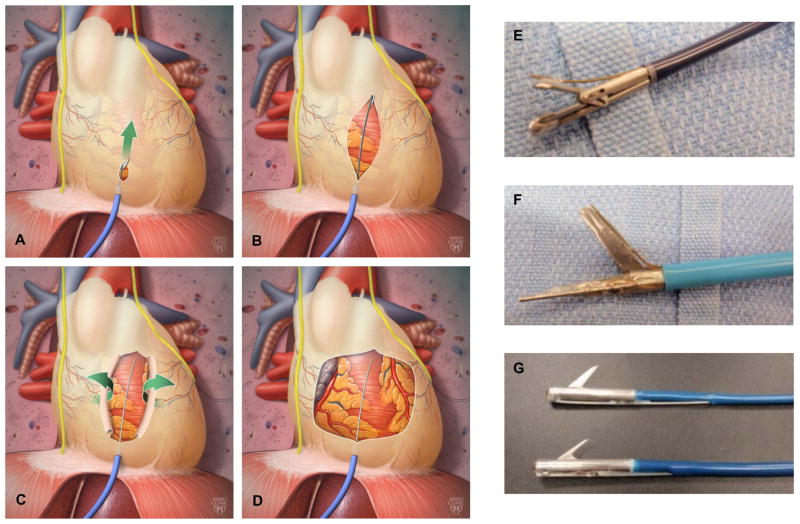Figure 1.
[A–D] Illustration depicting release of pericardial restraint using the percutaneous sub-xiphoid approach. Prototypes built to date that can track over a guidewire and grasp the pericardium [E], deliver electrical energy to stimulate the phrenic nerve and cut the pericardium in a forward scissors-like motion [F], and cut the pericardium with an actuating reverse-cutting blade [G].

